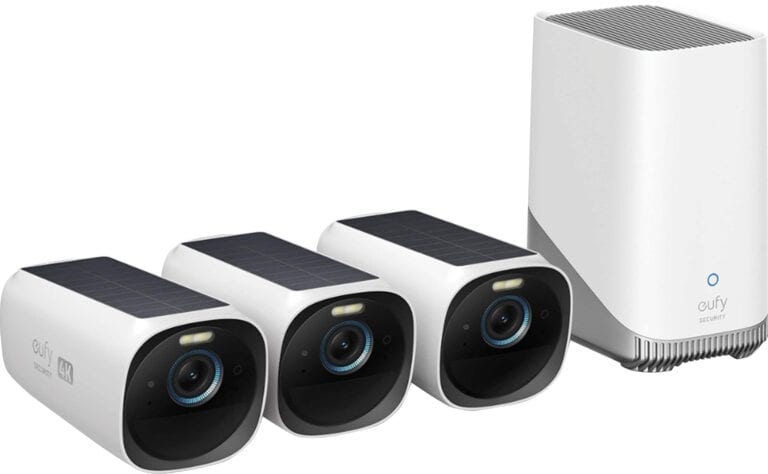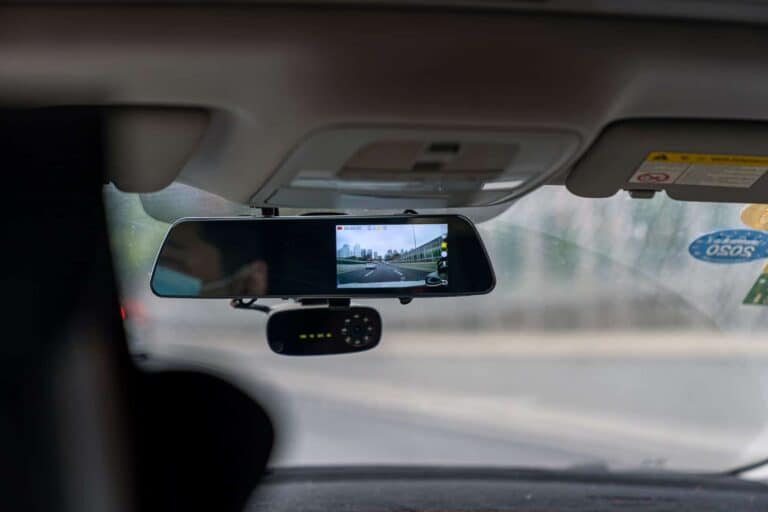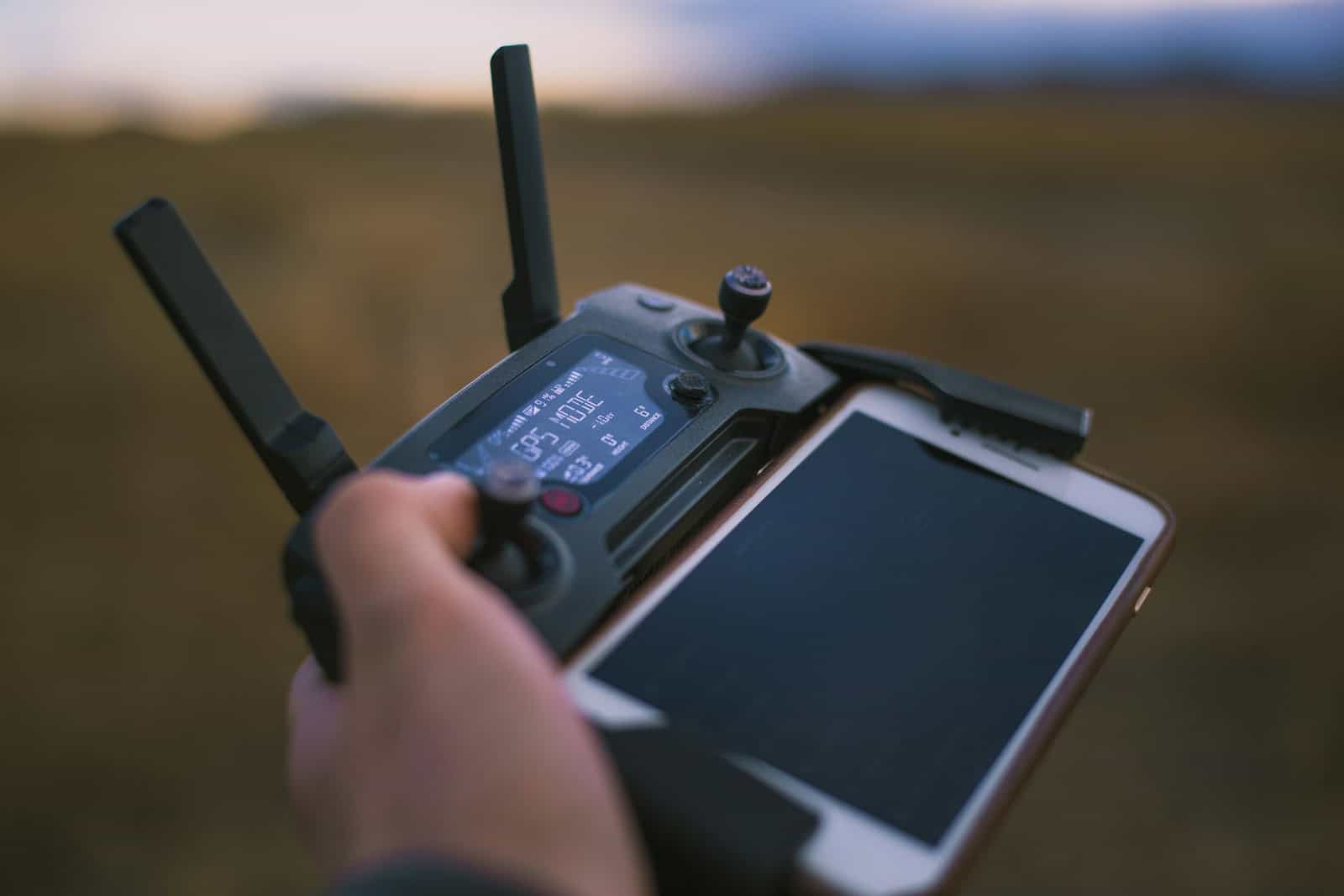
Understanding drone software development is important for those interested in creating innovative and impactful applications for unmanned aerial vehicles (UAVs). From controlling basic flight maneuvers to enabling complex autonomous missions, the software plays a crucial role in shaping the capabilities of modern drones.
Aspiring developers and drone enthusiasts can embark on a journey to harness the full potential of these flying machines by understanding the key components, programming languages, and emerging trends in drone software development.
Drone Software: The Brain Behind the Buzz
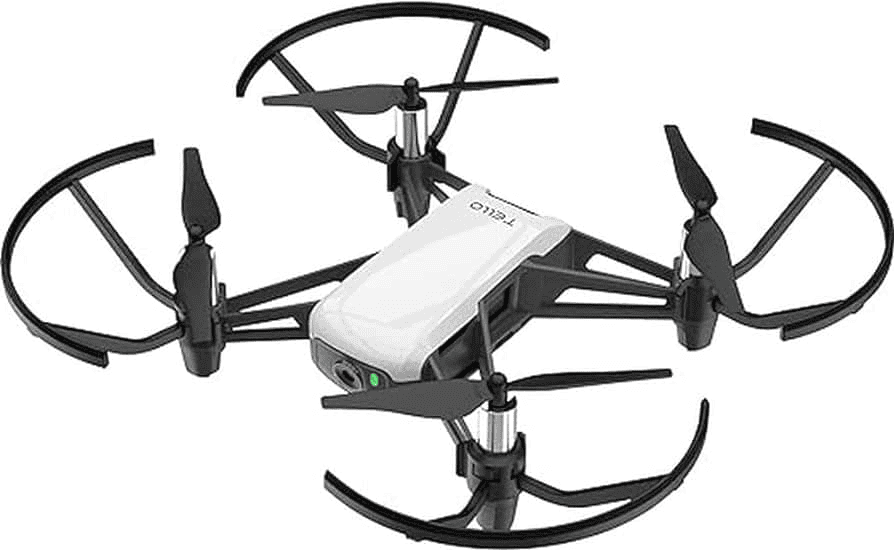
What is Drone Programming?
Drone programming is like giving your drone a set of instructions to follow. It’s the code that tells the drone how to fly, navigate, collect data, and perform specific tasks. Think of it as the brain behind the drone’s actions, allowing it to operate autonomously or with remote control.
Key Components of Drone Software
Drone software is a complex system, with several key components working together:
- Flight Controller: This is the core of the drone’s brain, responsible for stability and control. It processes sensor data and translates pilot commands into actions.
- Communication Systems: Drones need to communicate with ground control stations or other devices. This is often done through radio frequency or cellular networks.
- Data Processing: Drones collect a lot of data, such as images, videos, and sensor readings. The software processes this data for analysis and decision-making.
- User Interface: This is how pilots interact with the drone, whether through a mobile app or a dedicated controller. A well-designed user interface makes flying and controlling the drone easier.
- Sensor Integration: Drones rely on various sensors like GPS, cameras, and lidar. The software integrates these sensors to provide real-time information and enable autonomous flight.
Programming Languages for Drones
Several programming languages are used in drone development:
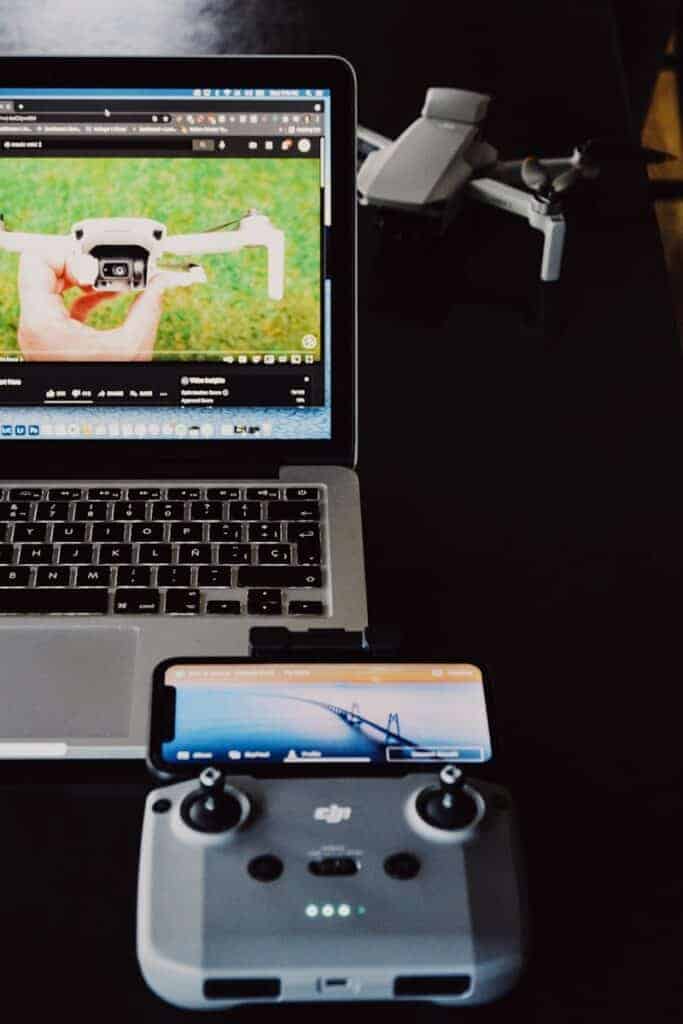
- C/C++: These low-level languages are often used for flight controllers and real-time systems due to their efficiency and performance.
- Python: A popular high-level language known for its readability and simplicity. Python is commonly used for data processing, machine learning, and computer vision applications in drone software.
- Java/Kotlin: These languages are used for developing Android-based drone control apps and user interfaces.
- Swift: The primary language for creating iOS-based drone control apps.
Popular Drone Software Platforms
Several software platforms facilitate drone programming and development:
| Platform | Description | Key Features |
|---|---|---|
| PX4 Autopilot | Open-source flight control software | Real-time flight control, sensor fusion, obstacle avoidance, mission planning |
| ArduPilot | Open-source autopilot system | Supports various drone types, autonomous flight, mission planning |
| DroneKit | Python library for drone control | Simplifies drone programming with high-level commands |
| DJI SDK | Software development kit for DJI drones | Access to drone features and data for custom app development |
| AirSim | Open-source simulator for drones and other autonomous vehicles | Test and develop drone software in a realistic virtual environment |
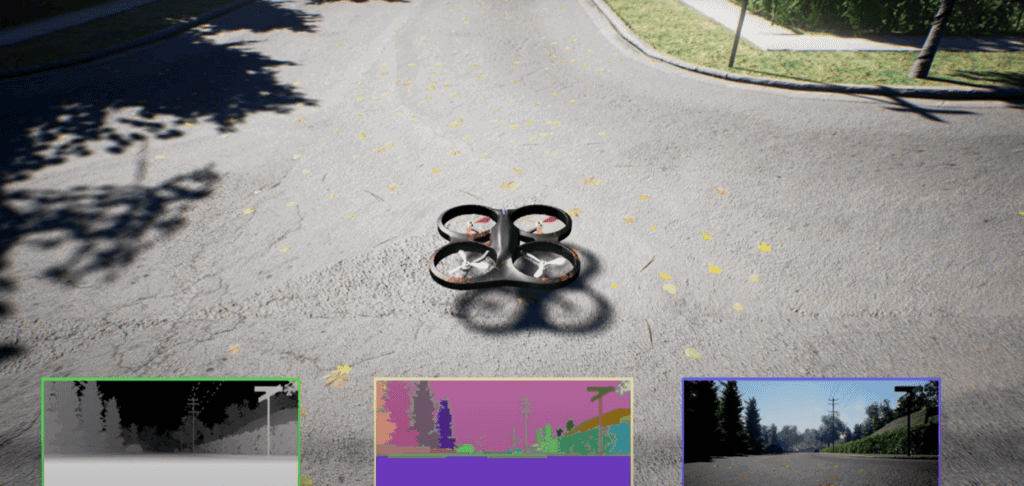
The Role of AI and Machine Learning in Drone Software
AI and machine learning are revolutionizing drone capabilities:
- Object detection and tracking: Drones can identify and follow objects in real time, enabling autonomous tasks like delivery or surveillance.
- Path planning and navigation: AI algorithms can optimize flight paths for efficiency and safety, even in complex environments.
- Data analysis and interpretation: Machine learning models can analyze drone-collected data to extract valuable insights for various industries.
- Predictive maintenance: AI can predict potential equipment failures, reducing downtime and maintenance costs.
Delving Deeper into Drone Programming
Programming Language Applications
While various programming languages are used in drone development, each has its strengths. C/C++ is often used for flight controllers and real-time systems. It’s very efficient and performs well. Python is a popular choice for data processing. It’s easy to read and simple to use. It’s also great for machine learning and computer vision. Java and Kotlin are used for Android drone control apps. Swift is the main language for iOS drone control apps.
AI and Machine Learning in Drone Software: Practical Examples
AI and machine learning are changing what drones can do. They can now identify and follow objects in real time. This makes tasks like delivery and surveillance possible. AI algorithms can also find the best flight paths. This makes flights safer and more efficient, even in tricky environments. Drones gather a lot of data. Machine learning models can analyze this data to find useful insights for different industries.
Object Detection Algorithms
Algorithms like YOLO (You Only Look Once) and SSD (Single Shot MultiBox Detector) are key for object detection. Drones use these to identify things like people, cars, or landmarks. This is useful for tasks like search and rescue or inspecting infrastructure.
Path Planning Algorithms
Algorithms like A* and Dijkstra’s algorithm help drones find the best route to a destination. They consider factors like distance, obstacles, and no-fly zones. This ensures the drone takes the safest and most efficient path.
Drone Software Platforms: A Comparison
Several platforms help with drone programming. PX4 Autopilot and ArduPilot are two popular open-source options. They both offer real-time flight control, sensor fusion, and mission planning. However, they have some differences. PX4 is known for its modularity and flexibility. This makes it a good choice for research and development. ArduPilot supports a wider range of drone types. It’s often used for commercial applications. Choosing the right platform depends on your needs and the type of drone you’re using.
| Feature | PX4 Autopilot | ArduPilot |
| License | Open-source | Open-source |
| Strengths | Modularity, flexibility, ideal for research and development | Wide drone support, good for commercial applications |
| Weaknesses | Can be complex to set up | Less flexible than PX4 |
| Ideal Use Cases | Research, custom drone builds, advanced applications | Commercial drones, standard missions, wide hardware compatibility |
Fundamentals of Drone Programming: Code Example
Here’s a simple example of Python code using the DroneKit library to send a basic command to a drone:
from dronekit import connect, VehicleMode
# Connect to the drone
vehicle = connect('udp:127.0.0.1:14550', wait_ready=True)
# Take off to 20 meters
vehicle.simple_takeoff(20)
# Wait for the drone to reach the target altitude
while True:
altitude = vehicle.location.global_relative_frame.alt
if altitude >= 19.5: # Target altitude reached
break
time.sleep(1)
# Hover for 10 seconds
time.sleep(10)
# Return to launch and land
vehicle.mode = VehicleMode("RTL")
# Close the connection
vehicle.close()
Development of Flight Control Systems: PID Controller Example
A PID controller helps maintain a drone’s stability. It continuously adjusts motor speeds to keep the drone level. The code for a PID controller involves calculations to determine the error between the desired state and the current state. It then applies adjustments to correct the error and stabilize the drone.
Drone Navigation and Control Systems: GPS Example
GPS is crucial for drone navigation. Here’s how you can access GPS data in Python with DroneKit:
# Get the current GPS coordinates
latitude = vehicle.location.global_relative_frame.lat
longitude = vehicle.location.global_relative_frame.lon
print(f"Latitude: {latitude}, Longitude: {longitude}")
Drone Education and Training Programs: More Recommendations
Many programs teach drone programming. Some popular online options include Drone Pilot Ground School and UAV Coach. These offer courses for different skill levels. For a more formal education, Embry-Riddle Aeronautical University has online and on-campus programs. You can also find hands-on training at local community colleges and flight schools. Don’t forget about certifications! The Part 107 certification is essential for commercial drone pilots. It covers things like airspace regulations and safety procedures.
Drone Industry Trends: The Future of UAVs
The drone industry is always changing. Drones are becoming more automated and autonomous. This means they can do more tasks without human help. They’re also being used in more industries, like agriculture, construction, and logistics. Drone technology itself is improving too. Batteries are lasting longer, sensors are getting better, and communication systems are more reliable. Drones are even being combined with other technologies, like AI, IoT, and 5G networks. This makes them even more connected and useful.
Drone Swarms: Cooperative Control
Imagine a group of drones working together! This is what drone swarms are all about. Software helps these drones communicate and coordinate their actions. They can fly in formation, avoid collisions, and complete complex tasks together. This technology has many potential uses, such as search and rescue, environmental monitoring, and even entertainment.
Ethical Considerations in Drone Software
As drones become more common, it’s important to think about ethical issues. Privacy is a big concern. Drones can collect a lot of data, so it’s important to use this data responsibly. We also need to think about how AI is used in drone software. We need to make sure it’s used in a way that is safe and fair for everyone.
Frequently Asked Questions: Additional Technical Questions
- What are some challenges in drone software development, and how are they addressed?
- How does sensor fusion work in drone software, and why is it important?
- What are real-time operating systems (RTOS), and how are they used in drone programming?
Fundamentals of Drone Programming
In the world of drone technology, knowing how to program a drone opens up a vast array of possibilities. Let’s look at the core aspects of drone programming, from the languages used to the integration of software with drone hardware.
Programming Languages and Tools
Various programming languages offer the versatility needed to enhance drone functionality. Popular choices include Python, known for its simplicity and readability, C++ for its efficiency in system-level operations, and Java, which is often used because of its object-oriented nature. The selected language often depends on the level of control required and the specific features desired. Developers utilize a mix of integrated development environments (IDEs), software development kits (SDKs), and APIs to create and deploy their drone applications.
Tools:
- Integrated Development Environments (IDEs): Aid in writing and testing code
- Software Development Kits (SDKs): Provide tools and libraries specific to drone models
- Application Programming Interfaces (APIs): Facilitate communication with drone firmware
Understanding Drone Software
Drone software is a multi-layered stack, typically including firmware, flight control systems, and application software. Firmware is the foundational code that communicates directly with the drone’s hardware, while higher-level software provides features such as flight path planning and real-time data analysis. As technology advances, understanding how these software components interact becomes crucial for developers looking to push the boundaries of drone capabilities.
Software Stack:
- Firmware: Handles low-level operations and hardware communication
- Flight Control Systems: Manage stability and flight dynamics
- Application Software: Offers advanced features and user interfaces
Drone Hardware and Software Integration
To bring a drone’s capabilities to life, seamless integration between its hardware and software is key. The flight controllers—drones’ brains—rely on well-designed software to process sensor input and manage flight behavior effectively. Developers need to be mindful of the hardware’s limitations and capabilities when crafting software, to ensure a harmonious and functional flying machine.
Integration Points:
- Sensors and Inputs: Must be accurately interpreted by software
- Control Algorithms: Determine the drone’s response to commands
- Actuators and Outputs: Execute the commands via physical components
Development of Flight Control Systems
In developing drone flight control systems, engineers focus on creating reliable autopilot mechanisms, integrating sophisticated sensors for data collection, and ensuring rigorous safety and compliance standards are met.
Autopilot and Navigation Technologies
Modern drones are equipped with GPS and advanced navigation technologies for precise positioning and autonomous flight. The autopilot system is the brains of the drone, responsible for executing the flight plan and making split-second adjustments to maintain stability and direction. Software plays a huge role here, where it processes data from various sources to manage control and flight dynamics.
Sensor Integration and Data Management
Sensors are vital in gathering information about the drone’s environment. This includes altitude, speed, and obstacles. Integrating a wide array of sensors requires sophisticated software that can accurately manage and interpret the data. This process ensures the UAV can react to its surroundings and make informed decisions.
Safety, Security, and Compliance
Safety protocols are essential to protect both the UAV and the environment it operates in. Security measures within the software prevent unauthorized access and control. Additionally, regulatory compliance with entities like the Federal Aviation Administration (FAA) is crucial. Developers must embed functionalities that adhere to airspace regulations to ensure safe and legal flight operations.
Practical Applications and the Drone Ecosystem
Drones have revolutionized various sectors by offering enhanced capabilities in commercial and industrial settings, bringing sophistication to software development processes, and spurring innovative advancements in technology.
Commercial and Industrial Use Cases
Unmanned Aerial Vehicles (UAVs), better known as drones, have become integral in fields like agriculture and logistics. They have transformed agriculture by enabling precise monitoring of crops, soil, and livestock, optimizing water use, and managing resources. In logistics, drones expedite package delivery and substantially reduce operational costs. Inspection roles are critical too; drones scrutinize infrastructure and construction sites, ensuring safety and regulatory compliance, which is invaluable to project managers overseeing large-scale projects.
Software Development Practices in UAVs
The development of drone software has its own set of standards and practices, often overseen by adept DevOps teams. These practices include stringent testing to guarantee accurate navigation and reliable data collection. A central focus of a drone software development project is creating apps that can adeptly handle image processing and real-time data analysis. As the software directly impacts a drone’s operation, developers prioritize creating intuitive, user-friendly applications that can be easily managed by operators.
Advancements and Innovations
The drone ecosystem is continuously evolving, with innovation spearheading transformative changes in drone technology. Advancements typically focus on improving UAV autonomy, energy efficiency, and integration into existing systems. This progression leads to drones capable of complex operations, which widens the horizon of their real-world applications. The open-source community has greatly contributed to this growth, with platforms like InterUSS aiming to create a standard for secure and efficient data exchange among UAVs, paving the way for a safer and more integrated future in drone operations.
Drone Education and Training Programs: Launching Your Drone Career
Whether you’re a hobbyist or aspiring professional, drone education and training programs can equip you with the knowledge and skills to fly safely and responsibly. These programs range from online courses and workshops to hands-on flight training and certifications.
Some popular options include:
- Drone Pilot Ground School: Offers comprehensive online courses for Part 107 certification and various drone applications.
- UAV Coach: Provides online training, study guides, and resources for drone pilots.
- Embry-Riddle Aeronautical University: Offers online and on-campus courses in unmanned aircraft systems (UAS).
- Local Community Colleges and Flight Schools: Many offer hands-on drone training and certification programs.
Drone Hardware and Components: Building Your Flying Machine
Drones consist of various hardware components:
- Frame: The structural foundation of the drone, providing support for other components.
- Motors and Propellers: Responsible for generating lift and thrust for flight.
- Flight Controller: The brain of the drone, handling stability and control.
- Electronic Speed Controllers (ESCs): Regulate power to the motors.
- Battery: Provides power to the drone’s electronics and motors.
- Sensors: Include GPS, IMU, barometer, and compass for navigation and stability.
- Camera and Gimbal: Captures images and videos, often with stabilization.
- Radio Transmitter and Receiver: Enable communication between the drone and pilot.
Best Drones and Best Drones for Kids: Finding the Perfect Fit
Choosing the right drone depends on your needs and budget. Some top picks include:
- DJI Mavic 3: A high-end drone with excellent camera capabilities and long flight time.
- Autel EVO Lite+: Offers impressive image quality and intelligent flight modes.
- Ryze Tello: A budget-friendly and beginner-friendly drone with programmable features.
- DJI Mini 3 Pro: Compact, lightweight, and easy to fly, ideal for travel and casual photography.
For kids, consider drones specifically designed for younger users, such as:
- DJI Tello Edu: Programmable and educational, encouraging STEM learning.
- Force1 Scoot Hand Operated Drone: Safe and intuitive, controlled by hand movements.
- Holy Stone HS110D: Affordable and easy to fly, perfect for beginners.
Drone Entrepreneurship and Business Models: Turning Your Passion into Profit
Drones offer numerous business opportunities:
- Aerial photography and videography: Capture stunning visuals for weddings, real estate, or events.
- Drone inspections: Inspect infrastructure, construction sites, or agricultural fields efficiently and safely.
- Drone delivery: Deliver packages or medical supplies to remote or hard-to-reach areas.
- Drone mapping and surveying: Create accurate maps and 3D models for various industries.
- Drone education and training: Offer courses and workshops to aspiring drone pilots.
Drone Navigation and Control Systems: Mastering Flight
Drones use various navigation and control systems to achieve precise and stable flight:
- GPS (Global Positioning System): Provides location and navigation data.
- IMU (Inertial Measurement Unit): Measures acceleration and rotation for orientation and stability.
- Barometer: Measures air pressure to determine altitude.
- Compass: Provides heading information.
- Obstacle Avoidance Sensors: Detect and avoid obstacles in the drone’s path.
Drone Communication Technologies: Staying Connected
Drones communicate with ground control stations using different technologies:
- Radio Frequency (RF): Traditional and reliable communication method for shorter distances.
- Cellular Networks: Enable long-range communication and connectivity, especially for remote operations.
- Wi-Fi: Used for short-range communication and data transfer.
Types of Drones: A Diverse Range of Applications
Drones come in various shapes and sizes, catering to different purposes:
- Multirotor drones: The most common type, offering stability and maneuverability.
- Fixed-wing drones: Resemble airplanes and are ideal for long-range missions.
- Single-rotor helicopters: Provide vertical lift and precise hovering.
- Hybrid VTOL (Vertical Take-Off and Landing) drones: Combine the benefits of multirotors and fixed-wing drones.
Drone Regulations: Fly Responsibly
It’s essential to understand and comply with drone regulations in your area. These regulations cover areas like:
- Registration and licensing: Register your drone and obtain the necessary certifications for commercial operations.
- Airspace restrictions: Avoid flying in restricted airspace, near airports, or over sensitive areas.
- Altitude limits: Adhere to maximum altitude restrictions.
- Flight rules: Follow safety guidelines for operating your drone.
Walmart’s Drone Delivery: Revolutionizing Retail and Logistics
Walmart is at the forefront of drone delivery innovation, experimenting with drone deliveries for groceries and other products. This technology has the potential to revolutionize retail and logistics by providing faster and more efficient delivery options, especially in rural or hard-to-reach areas.
Drone Community and Forums: Connect and Learn
Engage with the vibrant drone community through online forums and groups. Share your experiences, ask questions, learn from others, and stay updated on the latest drone news and trends.
Drone Camera Repair: Keeping Your Lens in Focus
If your drone’s camera malfunctions, seek professional repair services or contact the manufacturer for assistance. Avoid attempting DIY repairs on sensitive camera components unless you have the necessary expertise.
Drone Industry Trends: The Future of UAVs
The drone industry is rapidly evolving, with several trends shaping its future:
- Increased automation and autonomy: Drones are becoming more intelligent and capable of performing tasks without human intervention.
- Wider adoption in various industries: Drones are finding applications in agriculture, construction, logistics, and more.
- Advancements in drone technology: Improved battery life, sensors, and communication systems are enhancing drone capabilities.
- Integration with other technologies: Drones are being integrated with AI, IoT, and 5G networks for greater connectivity and functionality.
Frequently Asked Questions
This section aims to clarify some of the most common inquiries about drone programming, providing clear and direct answers to help you better understand the field.
What are the commonly used programming languages for drone development?
Programming languages like Python, C++, and JavaScript are frequently chosen by developers for crafting drone software. Python offers simplicity and readability, C++ provides performance for critical operations, and JavaScript is useful for web-based drone applications.
What are the essential tools and software for programming drones?
Essential tools include a robust integrated development environment (IDE), such as Visual Studio or Eclipse, and drone simulation software for testing, like Gazebo or AirSim. SDKs provided by manufacturers, for instance, the DJI SDK for mobile and Windows, are also pivotal.
How can one start a career in drone programming and what are the expected salaries?
Starting a career in drone programming typically involves gaining skills in relevant programming languages and understanding drone hardware. The expected salaries vary based on location and experience but can range from $50,000 to over $100,000 for specialized roles.
What resources are available for learning drone programming and software development?
Many online platforms offer courses in drone programming, including Coursera and Udemy. Additionally, community forums and platform-specific documentation, such as the ROS (Robot Operating System) wiki, serve as valuable resources for learners.
How are drones programmed to carry out autonomous tasks?
Drones are programmed for autonomy using algorithms that handle tasks like navigation, obstacle detection, and path planning. This programming enables them to make decisions and react to their environment without human intervention.
What development kits are recommended for beginners in drone programming?
Beginners are encouraged to start with accessible development kits like the Tello SDK, which offers a simplified environment for learning basic concepts. Kit-specific forums and documentation provide initial guidance for new programmers entering the field.



